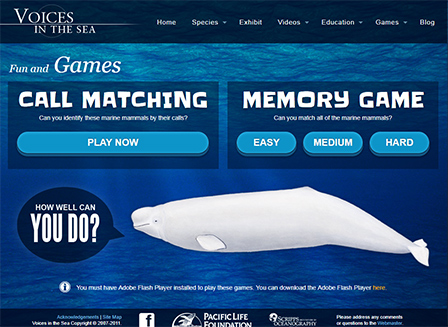Life Cycles
This program is a collaboration between the Cape Cod Regional STEM Network and Woods Hole Sea Grant.
Summary
In this 3rd grade unit, the students will learn that although very different in some ways, animals and plants have a very similar life cycle. This unit will expose them to a diverse group of animals and plants so that they can compare and contrast and observe this firsthand. By the end of the unit, the students will also have a better understanding of how delicate life cycles can be and how humans impact their life cycle.
NOAA Live! Webinars Highlighted: The Wonderful World of Plankton, Leaping for Atlantic Salmon, Swimming Upstream with River Herring, Winged Ambassadors: Ocean Travelers, The Life of Hawaiian Bonefishes, The Amazing Story of the Horseshoe Crab
Lesson Plan
Life Cycle Lesson Plan
Activity Sheets/Handouts
Habitat and Life Cycle Activity
This lesson meets the following Standards:
- NGSS:
-
- 3-LS1-1 - Develop models to describe that organisms have unique life cycles, but all have in common birth, growth, reproduction, and death.
- MA STE:
-
- 3-LS1-1 -Use simple graphical representations to show that different types of organisms have unique and diverse life cycles. Describe that all organisms have birth, growth, reproduction, and death in common but there are a variety of ways in which these happen.
Clarification Statements:
Examples can include different ways plants and animals begin (e.g., sprout from a seed, born from an egg), grow (e.g., increase in size and weight, produce a new part), reproduce (e.g., develop seeds, root runners, mate and lay eggs that hatch), and die (e.g., length of life).
Plant life cycles should focus on those of flowering plants.
Describing variation in organism life cycles should focus on comparisons of the general stages of each, not specifics.
- 3-LS1-1 -Use simple graphical representations to show that different types of organisms have unique and diverse life cycles. Describe that all organisms have birth, growth, reproduction, and death in common but there are a variety of ways in which these happen.
- Ocean Literacy Principles:
-
- Principle 5 - The ocean supports a great diversity of life and ecosystems.
- d - Ocean biology provides many unique examples of life cycles, adaptations, and important relationships among organisms (symbiosis, predator-prey dynamics, and energy transfer) that do not occur on land.
- i - Estuaries provide important and productive nursery areas for many marine and aquatic species.
- Principle 5 - The ocean supports a great diversity of life and ecosystems.
List of Unit Resources
This program is a collaboration between the Cape Cod Regional STEM Network and Woods Hole Sea Grant.
Teacher in Residence
Michael Irving
3rd Grade Teacher
North Falmouth Elementary School
Michael Irving worked with the Woods Hole Sea Grant Educator at the Woods Hole Oceanographic Institution during July of 2020, developing four different lesson plans that included both in-person and remote learning lessons and activities. The lessons include information and clips from more than a dozen NOAA Live! Webinars.








